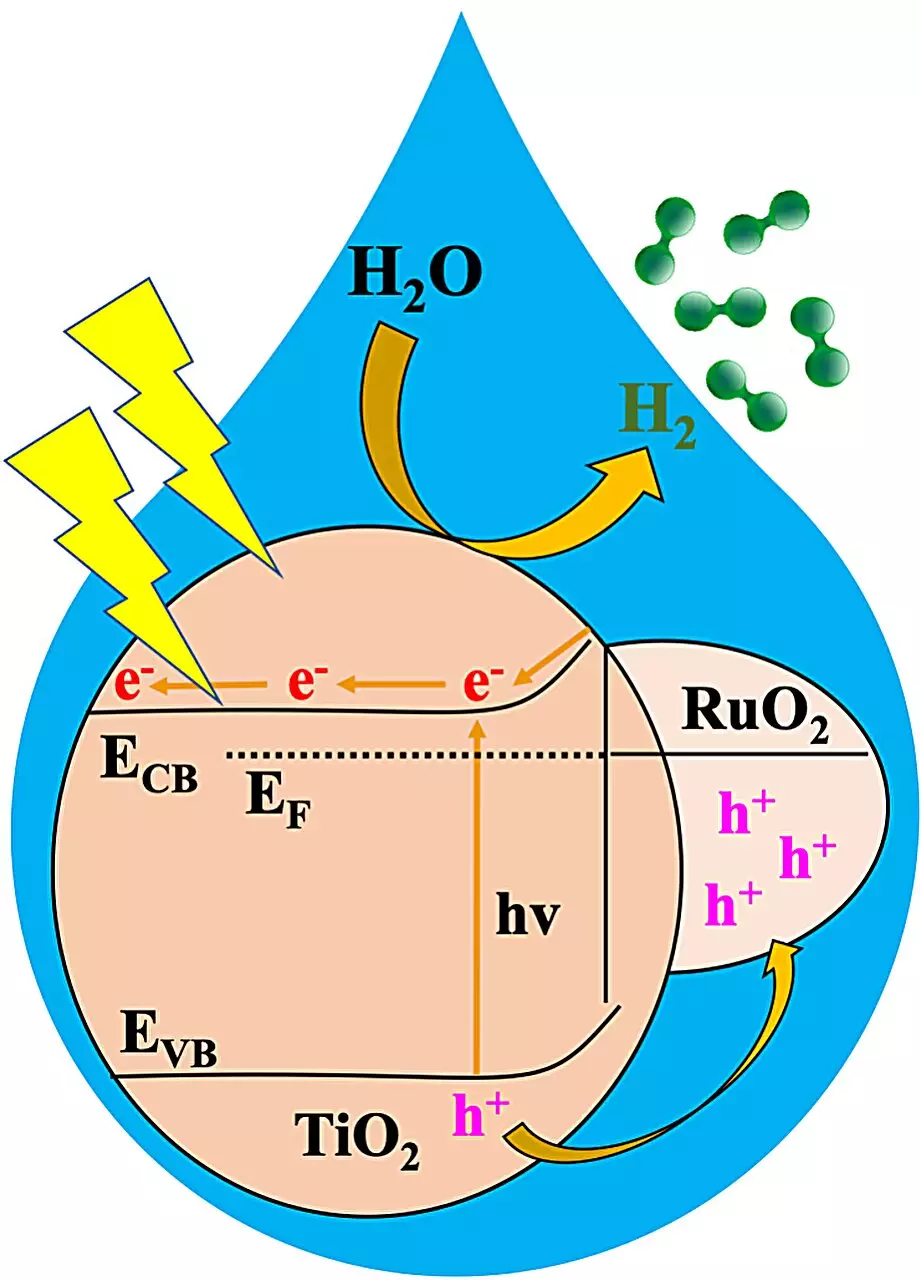Clean energy production is becoming increasingly important in the fight against climate change, and researchers at Oregon State University have made significant strides in this area. A recent study led by Kyriakos Stylianou has developed a material that has shown exceptional promise in converting sunlight and water into clean energy. This breakthrough could have far-reaching implications for the future of energy production.
Stylianou and his team focused on crystalline, porous materials known as metal organic frameworks (MOFs). These materials are made up of positively charged metal ions surrounded by organic “linker” molecules, creating nanosized pores with tunable structural properties. By designing a MOF with a combination of ruthenium oxide and titanium oxide doped with sulfur and nitrogen, the researchers were able to create a catalyst that effectively splits water into hydrogen when exposed to sunlight.
The resulting metal oxide heterojunction, known as RTTA, exhibited remarkable efficiency in producing hydrogen. Among various RTTA materials tested, RTTA-1, with the lowest ruthenium oxide content, demonstrated the fastest hydrogen production rate and a high quantum yield. In just one hour, a gram of RTTA-1 was able to produce over 10,700 micromoles of hydrogen, utilizing photons at an impressive rate of 10%.
Stylianou emphasized the synergistic effects of the metal oxides’ properties and surface properties from the parent MOF that enhance electron transfer, leading to the exceptional activity of RTTA-1. This study highlights the potential of MOF-derived metal oxide heterojunctions as photocatalysts for practical hydrogen production, offering sustainable and efficient energy solutions.
Producing hydrogen through water splitting using a catalytic process is cleaner than traditional methods like methane-steam reforming. While electrocatalysis is a common method for hydrogen production from water, it requires renewable energy sources to be truly sustainable. Current costs for producing hydrogen through methane-steam reforming are around $1.50 per kilogram, compared to about $5 per kilogram for green hydrogen. The ability to harness solar energy through photocatalysis presents a more environmentally friendly and cost-effective solution.
The development of MOF-derived catalysts like RTTA-1 represents a significant step forward in the quest for clean energy production. By utilizing the Earth’s abundant solar energy and water sources, researchers are paving the way for a more sustainable and efficient future. This study serves as a reminder of the potential of novel materials like MOFs in addressing pressing global challenges such as climate change and greenhouse gas emissions.


Leave a Reply